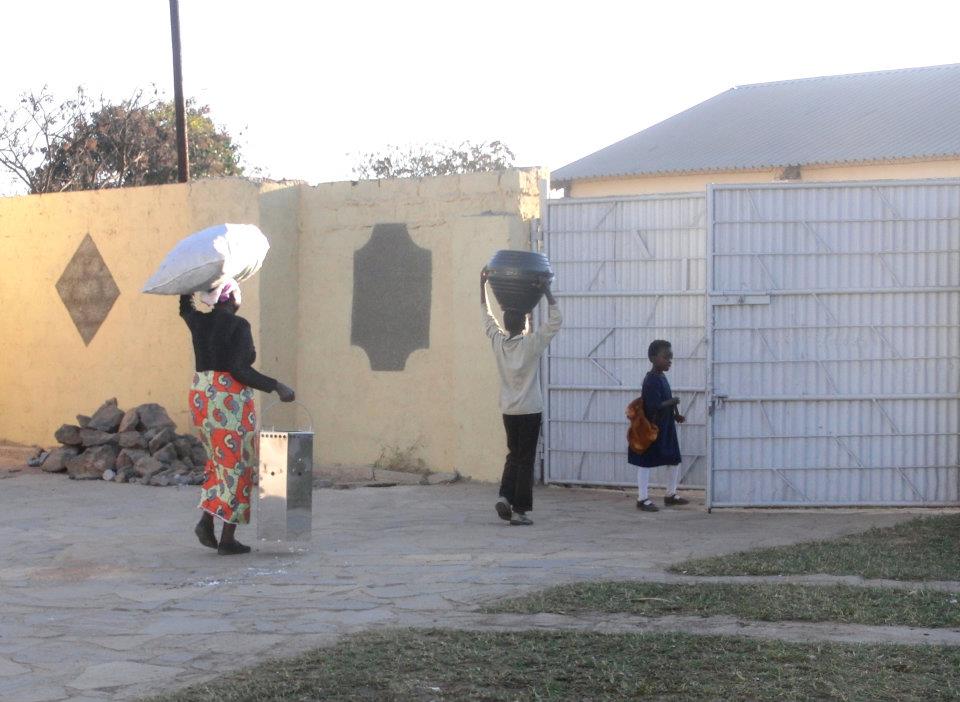New loan scheme launched to boost CDM projects in least developed countries
 New loan scheme launched to boost CDM projects in least developed countries
New loan scheme launched to boost CDM projects in least developed countries
(Addis Ababa, 20 April 2012) - – At the African Carbon Forum in Addis Ababa, Ethiopia this week, a new loan scheme was launched aimed at helping to support clean development mechanism (CDM) projects in least developed countries (LDCs). Such projects help to reduce greenhouse gas emissions and contribute to sustainable development and technology transfer, benefitting the economies of developing countries.
The CDM Loan Scheme will provide interest-free loans for CDM projects in LDCs as well as countries that have fewer than 10 registered CDM projects. The scheme is run jointly by the United Nations Framework Convention on Climate Change (UNFCCC), the United Nations Environment Programme (UNEP) Risoe Centre and the United Nations Office for Project Services (UNOPS).
The loans will finance the development of Project Design Documents (PDD); validation by a Designated Operational Entity; registration of the project with the UNFCCC; and the monitoring and verification of certified emissions reductions (CERs).
"The launch of the loan scheme is both timely and relevant," said UNFCCC Executive Secretary Christiana Figueres. "With the European Union Emission Trading Scheme to only accept CERs from LDCs starting next year and many LDCs being located in Africa, the loan scheme has come at the right time and to the right place."
“The CDM Loan Scheme is a chance to improve the access to and spread of the CDM, particularly in Africa," said Figueres. "I hope during next year’s Africa Carbon Forum, we will see the positive impact this scheme has made towards ensuring the active participation of the continent in the CDM."
The loan scheme will be extended to projects that meet a number of criteria including:
- a high probability of registration with the UNFCCC;
- a reasonable expectation of generating at least 7,500 CERs per year for projects in LDCs and 15,000 CERs per year for projects in non-LDCs;
- documentation that is developed with an experienced CDM consultant.
"The time is right for Africa to increase its share of CDM projects," said John Christensen, Head of the UNEP Risoe Centre. “We have been working to try and increase the engagement of African countries in the carbon market,” he said. “We have had some modest success. We hope with the loan scheme and continued capacity-building we can make a real difference in the number of projects here.”
Applications are now being accepted for the first round of reviews for the loan scheme, which will end in June.
About the CDM
The CDM allows emission-reduction projects in developing countries to earn certified emission reduction (CER) credits, each equivalent to one tonne of CO2. These CERs can be traded and sold, and used by industrialized countries to a meet a part of their emission reduction targets under the Kyoto Protocol. The mechanism stimulates sustainable development and emission reductions, while giving industrialized countries some flexibility in how they meet their emission reduction limitation targets. With 4,015 registered projects in 74 developing countries, the CDM has proven to be a powerful mechanism to deliver finance for emission-reduction projects and contribute to sustainable development. To date, some 1440 projects in 47 countries have been issued a total of more than 910 million CERs.
The CDM is also the main source of income for the UNFCCC Adaptation Fund, which was established to finance adaptation projects and programmes in developing country Parties to the Kyoto Protocol that are particularly vulnerable to the adverse effects of climate change. The Adaptation Fund is financed by a 2% levy on CERs issued by the CDM.
About the UNFCCC
With 195 Parties, the United Nations Framework Convention on Climate Change (UNFCCC) has near universal membership and is the parent treaty of the 1997 Kyoto Protocol. The Kyoto Protocol has been ratified by 193 of the UNFCCC Parties. Under the Protocol, 37 States, consisting of highly industrialized countries and countries undergoing the process of transition to a market economy, have legally binding emission limitation and reduction commitments. The ultimate objective of both treaties is to stabilize greenhouse gas concentrations in the atmosphere at a level that will prevent dangerous human interference with the climate system.
See also
cdm.unfccc.int
Twitter: @UN_CarbonMechs
Facebook: facebook.com/UNcarbonmechs


Offset now: visit the United Nations Carbon Offset Platform
Connect with us: